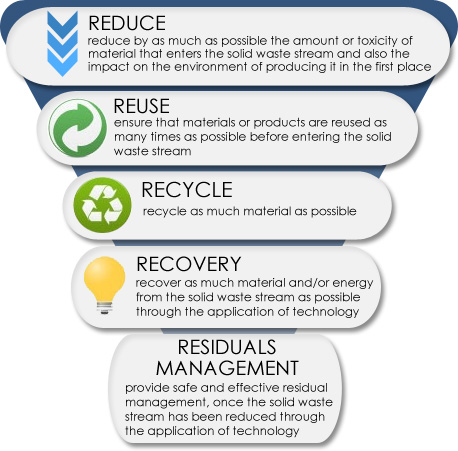Zero waste and the circular economy
There is a positive business case for reducing the amount of waste we generate. In British Columbia, we have set a provincial waste disposal target to lower the municipal solid waste disposal rate to 350 kg per person to reduce the waste we generate on land and in the marine environment.
Zero waste approaches aim to reduce and ultimately eliminate garbage. In 2017, British Columbians disposed of an average of 506 kg of municipal solid waste per person - down 61 kg per person since 2012. For more information, see Environmental Reporting B.C.
The 5 R pollution prevention hierarchy is a useful planning tool for moving towards zero waste. Once all achievable opportunities at a higher level have been taken, only then should the next level be looked at. For example, opportunities for recycling should be explored only after all opportunities for reduction and reuse of materials have been exhausted.

The pollution prevention hierarchy supports a circular economy approach which can create jobs, promote innovation that provides a competitive advantage and help to protect people and the environment. In a circular economy resources are never tossed, but instead are reused, recycled and reintroduced as new products. All with a focus on clean technology and energy efficiency. The Jurisdictional Scan for Circular Economy (PDF, 2.1 MB) looks at how this approach has been used elsewhere.
